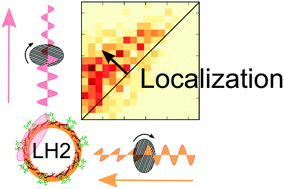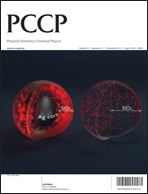Evidence of excited state localization and static disorder in LH2 investigated by 2D-polarization single-molecule imaging at room temperature†
Abstract
Two-dimensional polarization fluorescence imaging of single light harvesting complexes 2 (LH2) of Rps. acidophila was carried out to investigate the polarization properties of excitation and fluorescence emission simultaneously, at room temperature. In two separate experiments we excited LH2 with a spectrally narrow laser line matched to the absorption bands of the two chromophore rings, B800 and B850, thereby indirectly and directly triggering fluorescence of the B850 exciton state. A correlation analysis of the polarization modulation depths in excitation and emission for a large number of single complexes was performed. Our results show, in comparison to B800, that the B850 ring is a more isotropic absorber due to the excitonic nature of its excited states. At the same time, we observed a strong tendency for LH2 to emit with dipolar character, from which preferential localization of the emissive exciton, stable for minutes, is inferred. We argue that the observed effects can consistently be explained by static energetic disorder and/or deformation of the complex, with possible involvement of exciton self-trapping.


 Please wait while we load your content...
Please wait while we load your content...